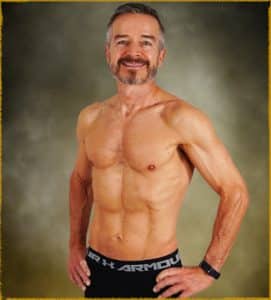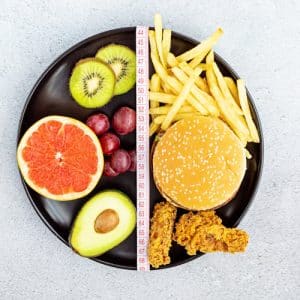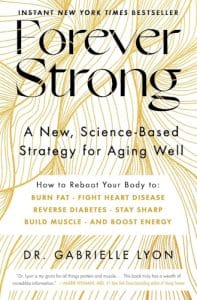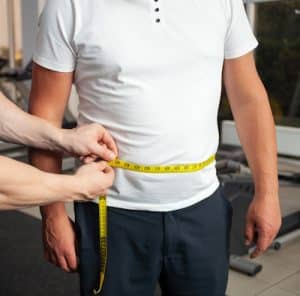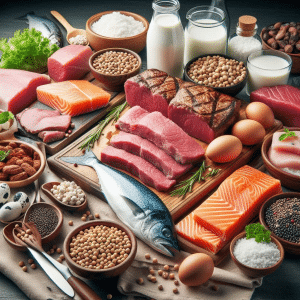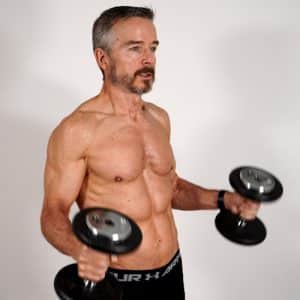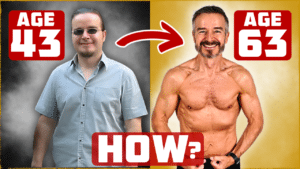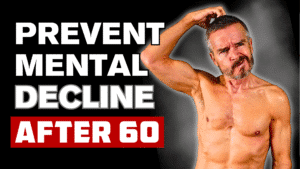Unlock the Secrets to Weight Loss After 60
Let’s face it, dieting sucks, and losing weight is really hard. It’s even harder when you’re over 60.
Is there a way that you can eat delicious food, always feel full, and still lose your unwanted belly fat? In this article, I’ll reveal two little-known secrets to weight loss after 60 that have helped me to get and stay lean without ever feeling hungry! These secrets could revolutionize the way you think about losing weight after 60.
Getting Lean after 60 boosts your health and quality of life
Getting and staying lean after 60 dramatically improves your health and boosts your quality of life. By shedding excess body fat, you’re not just improving your looks – you’re building a powerful defense against many age-related diseases. Plus, you’ll feel a big boost in your energy and you’ll be able to do more of the activities that you love.
But, as we get older, our metabolism naturally slows, our muscle mass declines and key hormone levels drop, making it harder to burn calories and lose fat.
In this article, I’ll share two proven techniques that will help you to shed fat after 60 and keep it off, unlocking your path to a leaner, more vibrant you.
Caloric Deficit - The Foundation of Weight Loss
There are many popular weight loss diets out there, and while they differ widely in their approach, they all share one crucial element – and it’s the only thing that actually causes weight loss: creating a caloric deficit. A caloric deficit simply means that you take in fewer calories than your body burns, forcing it to draw down stored fat for energy.
Now, one pound of body fat contains about 3,500 calories. So, to lose one pound per week, you need a daily caloric deficit of 500 calories. You can achieve this by tweaking your food intake and adding a little exercise. For example, swap out your grande mocha latte for a coffee with whole milk and save 300 calories. Then add a brisk 30-minute walk for another 200 calories extra burned. Maintaining this caloric deficit over time leads to steady, sustainable weight loss.
Caloric deficit is the foundation for all weight loss. Regardless of your age, the only way to lose fat is to get into a caloric deficit and stay there until you’ve reached your fat loss goal.
muscle preservation - you're #1 goal
But, if you’re over 60 there is something even more important than losing fat: preserving muscle mass. Muscle mass and strength are what keep you strong, sturdy, mobile, and independent as you age. Muscle makes the difference between watching life from the sidelines and being an active participant.
As Dr. Gabrielle Lyon notes, in her best-selling book “Forever Strong“: “Muscle is the organ of longevity. Building muscle is the most important safeguard for health because it is the bodily system that will allow us to live our longest, most capable, fulfilling life.”
You see, what we consider to be the inevitable signs of aging – feebleness, frailty, loss of function – are actually symptoms of muscle loss. From mid-life onward, we gradually lose muscle mass and strength every year, and the loss accelerates as we age.
But here’s the good news: the loss of muscle mass and strength isn’t inevitable. It can be prevented and even reversed. So, when you’re starting a weight loss journey after 60, your number 1 priority must be preserving and building muscle.
brisk walking will Slim your Waist
TBD
the million dollar question
But here’s the catch – when you’re in a caloric deficit, you risk burning muscle along with fat. This happened to my brother. He was thrilled about losing 15 pounds, only to learn from his doctor that 5 of those pounds were from muscle, not fat!
Now losing fat is hard enough, but regaining lost muscle is much, much harder. So the million-dollar question is: How do you lose fat while preserving muscle after 60?
secret #1 - Prioritize Protein
The first secret to preserving muscle while losing fat is to Prioritize Protein. Whatever diet program you choose, you need to eat a lot of high-quality protein – probably a lot more than you’re eating right now.
As we age, our bodies become less efficient at using protein to build muscle, so we need to eat more protein than we did when we were young to build and keep our muscles.
How much protein do you need? I follow Dr. Lyon’s recommendation of 1g of protein per pound of ideal body weight. So, for example, if you’re a 6-foot tall male, your ideal body weight is about 165 pounds, so you need to eat 165 grams of protein every day. That’s a lot! Divided across 3 meals a day that’s 55 grams of protein per meal:
- Breakfast: 2 whole eggs, 8 egg whites and a slice of ham
- Lunch: two full tins of light tuna
- Dinner: a 9 oz striploin steak
When choosing your protein source, opt for low-fat sources like lean beef, skinless chicken breast, fish, egg whites, and low-fat dairy. These lean proteins pack a hefty protein punch with fewer calories, making it easier to achieve and maintain the caloric deficit essential for weight loss.
Finally, spread your protein intake evenly throughout the day. This provides your muscles with a steady supply of building blocks, maximizing muscle growth and maintenance.
protein-packed meals keep you full for longer
But the real game-changer in this protein-first strategy is its impact on hunger control. Lean protein is incredibly filling. Imagine a large grilled chicken breast with a generous heap of colorful veggies and a crisp salad. It’s a meal that’s not only healthy, delicious, and low-calorie, but it’s also seriously satisfying. No need for a mountain of calorie-dense starchy carbs to feel full.
These protein-packed meals keep you satisfied for hours, right up until your next mealtime. By focusing on large servings of high-quality p rotein, you’re not just feeding your muscles – you’re also making it much easier to maintain a caloric deficit without feeling hungry.
secret #2 - regular strength training
The second secret to keeping muscle while you lose fat after 60 is regular strength training. And if you’ve never done it before, don’t worry – it’s never too late to start, and the benefits are incredible.
What exactly is strength training? Simply put, it’s any exercise that makes your muscles work against a weight or a force. This could be lifting weights, using resistance bands, or even your own body weight. The goal is to challenge your muscles, causing them to adapt and grow stronger.
It not only helps maintain muscle mass but it also improves bone density, balance, and overall functional fitness. And, as an added bonus, these workouts burn extra calories, helping you achieve your caloric deficit and accelerate fat loss while preserving muscle.
beginning strength training
The absolute minimum to maintain muscle while dieting is just two 30-minute strength training sessions per week. You can start with no equipment, just use your body weight. Here are links to a several safe, full-body, no-equipment beginner workouts that you can do easily at home:
►Never exercised before: https://www.youtube.com/watch?v=pXXu4eUrzoQ
►Beginner: https://www.youtube.com/watch?v=Gze8oMuj4as
►Intermediate: https://www.youtube.com/watch?v=b-i4N6cVzec
►Advanced: https://www.youtube.com/watch?v=siIicrZ4gng
Or you can use the AI Fitness Trainer available for free from Microsoft Copilot to create your own custom strength training workout.
strength training and high protein are a powerful team
Together, strength training and adequate protein are a powerful team. They send a clear message to your body to preserve and build muscle, even while you’re losing fat.
So there you have it – the foundation of weight loss through caloric deficit, and the two secrets to successful fat loss after 60: prioritizing protein and engaging in regular strength training
If you found this article helpful, please subscribe to Ripped Seniors for more tips on staying fit and vibrant after 60.
Thanks for reading and remember – when you stay fit, you stay young!

